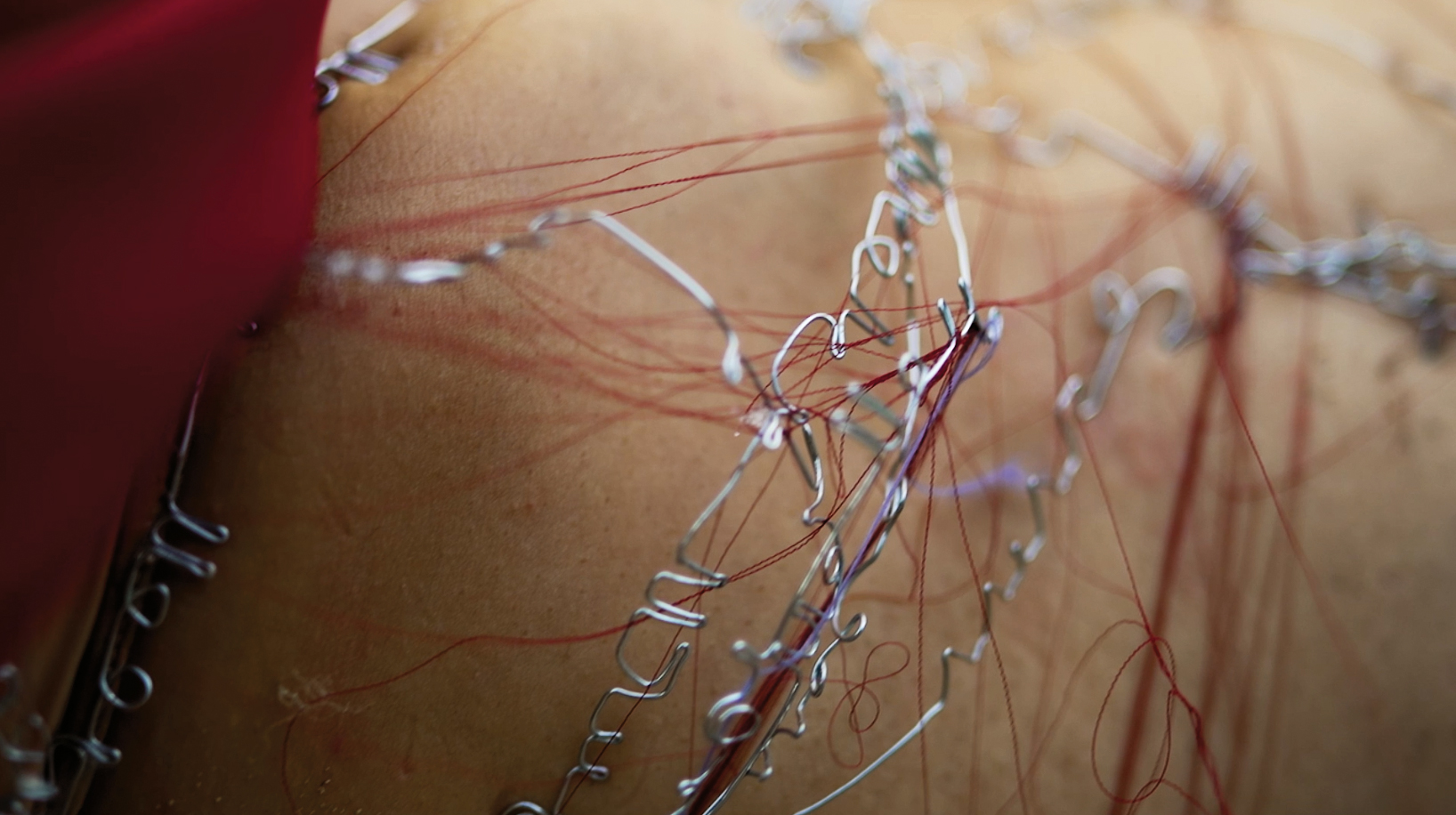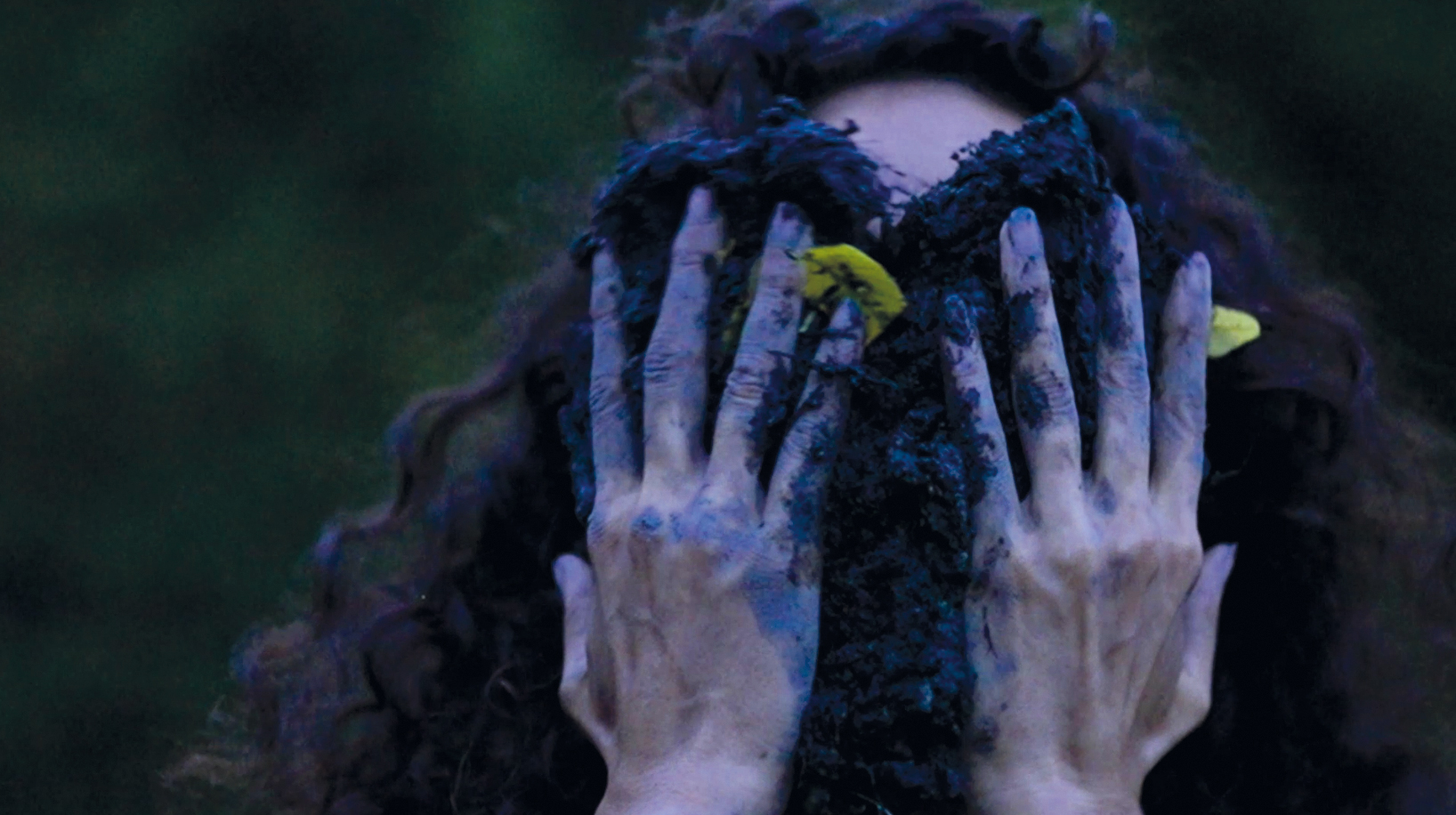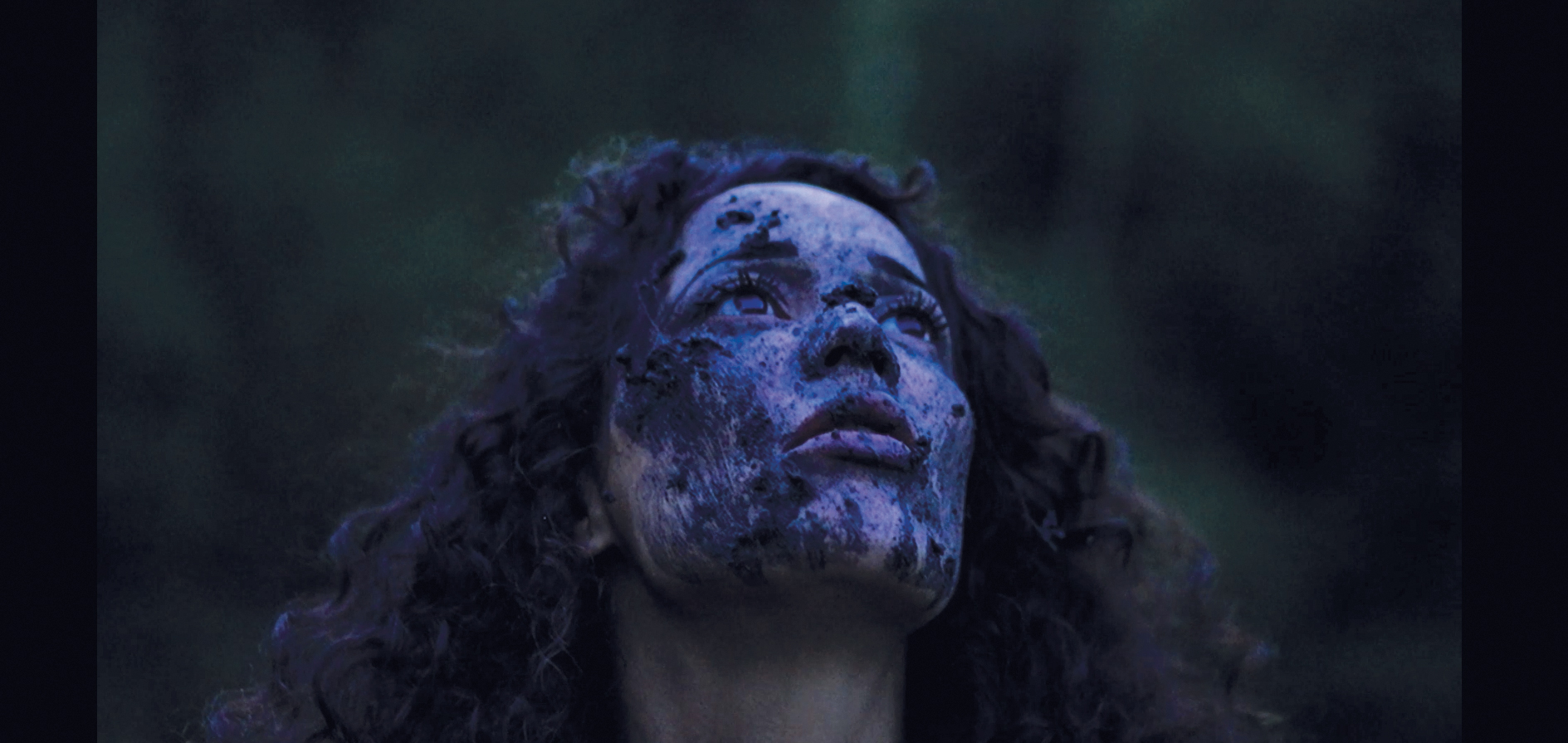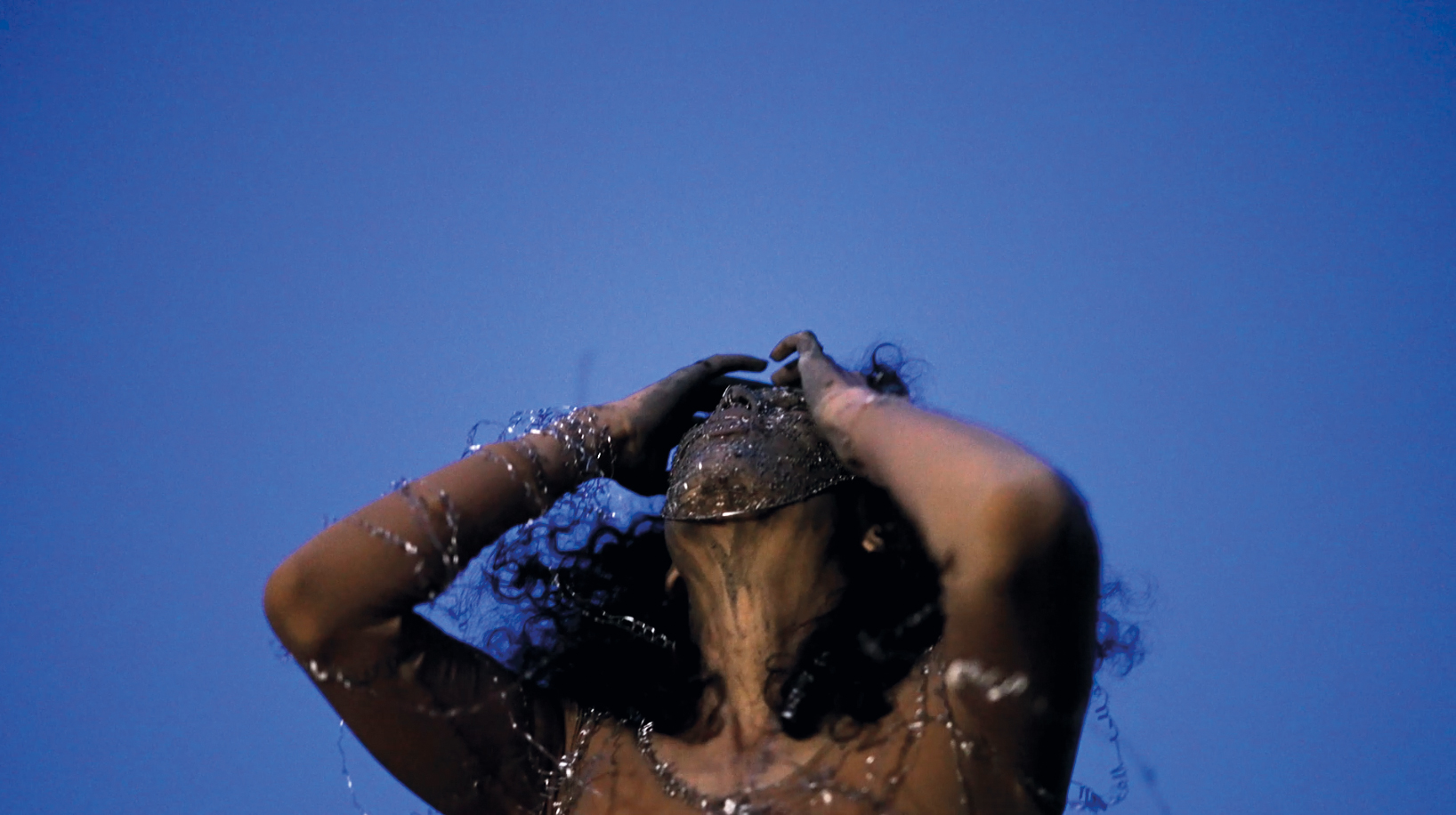[Tadhakar]
Souviens-toi.
تذكّر
ديو-أداء.
اتَّصل مع الفنانة للحصول على الفيديو.
2023
Video-performance
Contacter l’artiste pour obtenir l’accès à la video
2023
Quasi- autobiographique, Zohra Hassani réalise cette vidéo-performance « Tadhakar » qui signifie « souviens-toi » en arabe en Août 2023 au moment du débat sur l’abaya à l’école. Dans un cadre paisible et champêtre, habité par le son des oiseaux, une jeune femme est violemment mise à terre par trois hommes et déshabillée du long voile qui lui habille la tête et le corps. Sous ce voile déchiré, nous découvrons le visage et le corps de l’artiste, devenus inaccessibles,
intouchables et ornés de barbelés aux 99 noms de Dieu. Contrairement à ce que l’on pourrait de prime abord penser, nous n’assistons pas à une agression sexuelle, bien que cette dimension soit sous-jacente. Il s’agit là d’une nudité ontologique marquée par une identité gravée en nous.
Lorsque l’artiste entend les voix de ses ancêtres s’élever, par un geste ritualisé, elle module la terre à ses pieds et s’enduit le visage. Geste de réappropriation de son corps, acte de résilience, la terre des ancêtres et les racines s’annoncent source d’émancipation, réappropriation de son identité.
Zohra Hassani porte un masque de barbelés, d’abord moulé de terre. Il détaille en calligraphie arabe les 99 noms de Dieu, réactivant ainsi la symbolique originelle et sacrée des masques africains.
Fadila Yahou | Historienne et critique d’art, docteure en histoire de l’art.
![Extract from the video-performance [Tadhakar].](https://maison-zohrahassani.com/wp-content/uploads/2024/09/extrait-video-tadhakar-performance-zohra-hassani-9.jpg)
أنجزت الفنَّانة زهراء حساني هذا الفيديو-الأداء بعنوان « تذكّر« كعمل مقاربٍ للسيرة ذاتية وذلك في أغسطس 2023 بالتزامن مع النقاش حول ظاهرة العباءة في المدارس. في مشهد هادئ وطبيعي تملؤه أصوات العصافير، يتم طرح شابة بعنف على الأرض من قبل ثلاثة رجال ويتم تجريدها من الحجاب الطويل الذي يغطي رأسها وجسدها. تحت هذا الحجاب الممزق، يظهر وجه الفنانة وجسدها، اللذان أصبحا غير قابلين للمس ومزينين بأسلاك شائكة تحمل أسماء الله الحسنى الـ99.
وعلى عكس ما قد يبدو للوهلة الأولى، لا نشهد هنا اعتداءً جنسيًا، رغم أن هذه البُعد يبقى ضمنيًّا. إنه عُري وجودي يحمل هوية محفورة في أعماقنا.
عندما تسمع الفنانة أصوات أجدادها تعلو، تقوم من خلال حركة طقسية بتشكيل الأرض تحت قدميها ودهن وجهها بها. إن هذا الفعل هو استعادة لملكية جسدها، وعملية صمود، حيث تصبح أرض الأجداد والجذور مصدرًا للتحرر واسترجاع الهوية.
ترتدي زهرة حساني قناعًا من الأسلاك الشائكة، وقد صُنع في البداية من الطين. ويزدان هذا القناع بخط عربي يتضمن أسماء الله الحسنى الـ99، مما يعيد تفعيل الرمزية الأصلية والمقدسة للأقنعة الإفريقية.
فاضلة ياهو | مؤرخة وناقدة فنية، حاصلة على دكتوراه في تاريخ الفن.




[tadhakar]
remember
Video-performance
Contact the artist to obtain access to the video.
2023
Quasi-autobiographical, Zohra Hassani created this video-performance “Tadhakar”, which means “remember” in Arabic, in August 2023, at the time of the debate on the abaya in schools. In a peaceful rural setting, filled with the sound of birds, a young woman is violently knocked to the ground by three men and stripped of the long veil covering her head and body. Under this torn veil, we discover the artist’s face and body, now inaccessible,
untouchable and adorned with barbed wire in the 99 names of God. Contrary to what one might at first think, we are not witnessing a sexual assault, although this dimension is underlying. What we are witnessing is ontological nudity, marked by an identity engraved in us.
When the artist hears the voices of her ancestors, in a ritualized gesture, she modulates the earth at her feet and smears her face. A gesture of reappropriation of her body, an act of resilience, the earth of her ancestors and her roots are a source of emancipation, a reappropriation of her identity.
Zohra Hassani wears a barbed-wire mask, first molded from earth. He details the 99 names of God in Arabic calligraphy, reactivating the original, sacred symbolism of African masks.
Fadila Yahou | Historian and art critic, PhD in art history.



